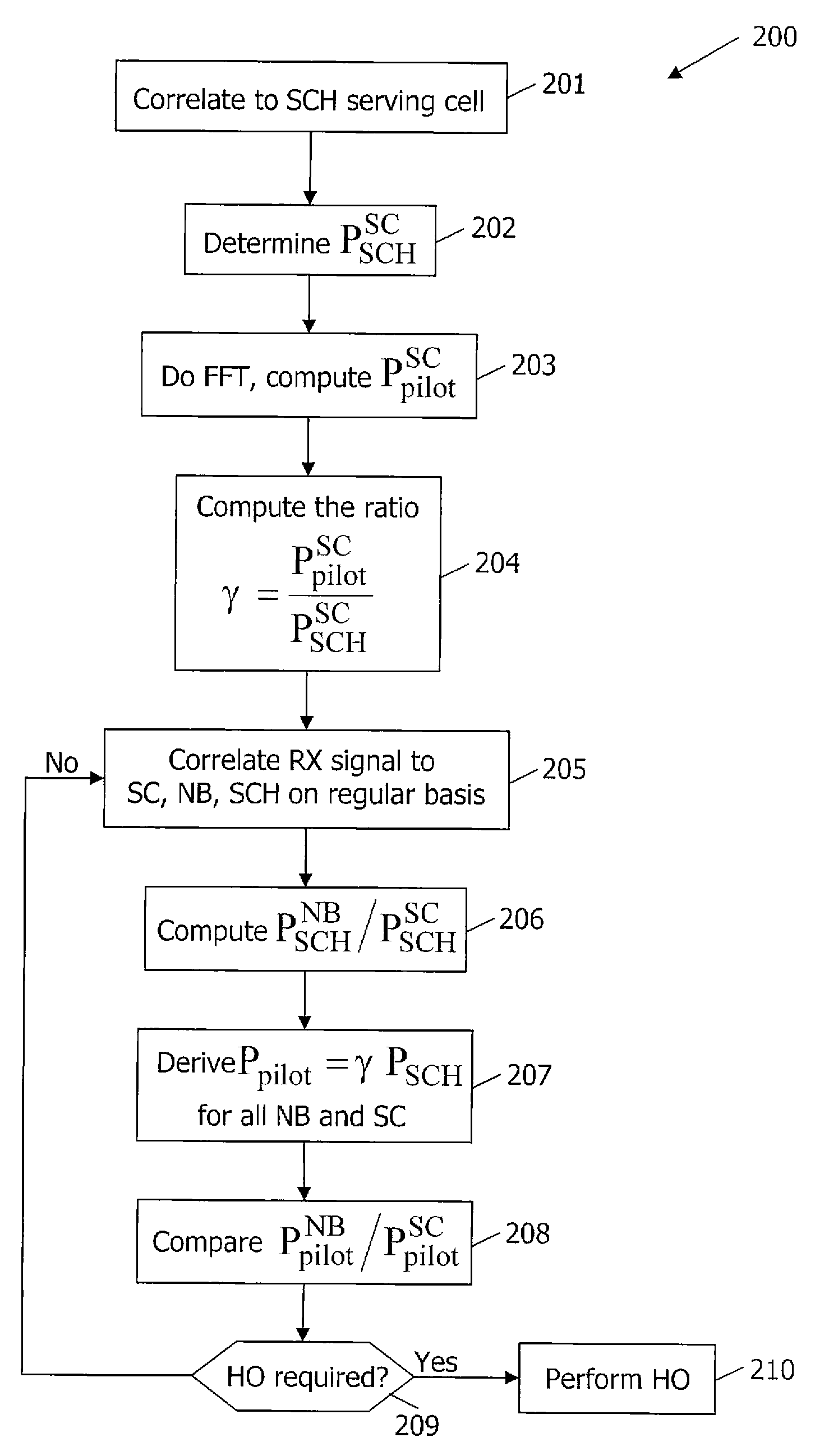Method and system for using the synchronization channel to obtain measurements in a cellular communications system
a cellular communication system and synchronization channel technology, applied in the field of cellular communication networks, can solve the problems of reducing throughput, increasing the cost of chip area in the ue, and interfering with the synchronization arrangemen
- Summary
- Abstract
- Description
- Claims
- Application Information
AI Technical Summary
Benefits of technology
Problems solved by technology
Method used
Image
Examples
Embodiment Construction
[0013]FIG. 1 provides a time frequency structure for a downlink (DL) portion of an OFDM system. A superframe 101, typically 10 ms in duration and having a certain bandwidth, consists of a number of subframes 102. As seen therein, the synchronization channel (SCH) 103 is transmitted at regular intervals, typically corresponding to one OFDM symbol per 5 ms. The SCH is used by a UE, such as a mobile terminal, cellular telephone and the like, to obtain time and frequency synchronization information from a cell and hence is used in the cell search procedure. An exemplary SCH consists of (a) two different signals, a primary signal being the same for all cells and used for time synchronization and a secondary signal that is different for different cells and is used for detecting the cell ID, or (b) one signal constructed in such a way that the timing can be found by autocorrelation of the signal while the cell ID is found by cross-correlation with known cell ID sequences. The present inven...
PUM
 Login to View More
Login to View More Abstract
Description
Claims
Application Information
 Login to View More
Login to View More - R&D
- Intellectual Property
- Life Sciences
- Materials
- Tech Scout
- Unparalleled Data Quality
- Higher Quality Content
- 60% Fewer Hallucinations
Browse by: Latest US Patents, China's latest patents, Technical Efficacy Thesaurus, Application Domain, Technology Topic, Popular Technical Reports.
© 2025 PatSnap. All rights reserved.Legal|Privacy policy|Modern Slavery Act Transparency Statement|Sitemap|About US| Contact US: help@patsnap.com



